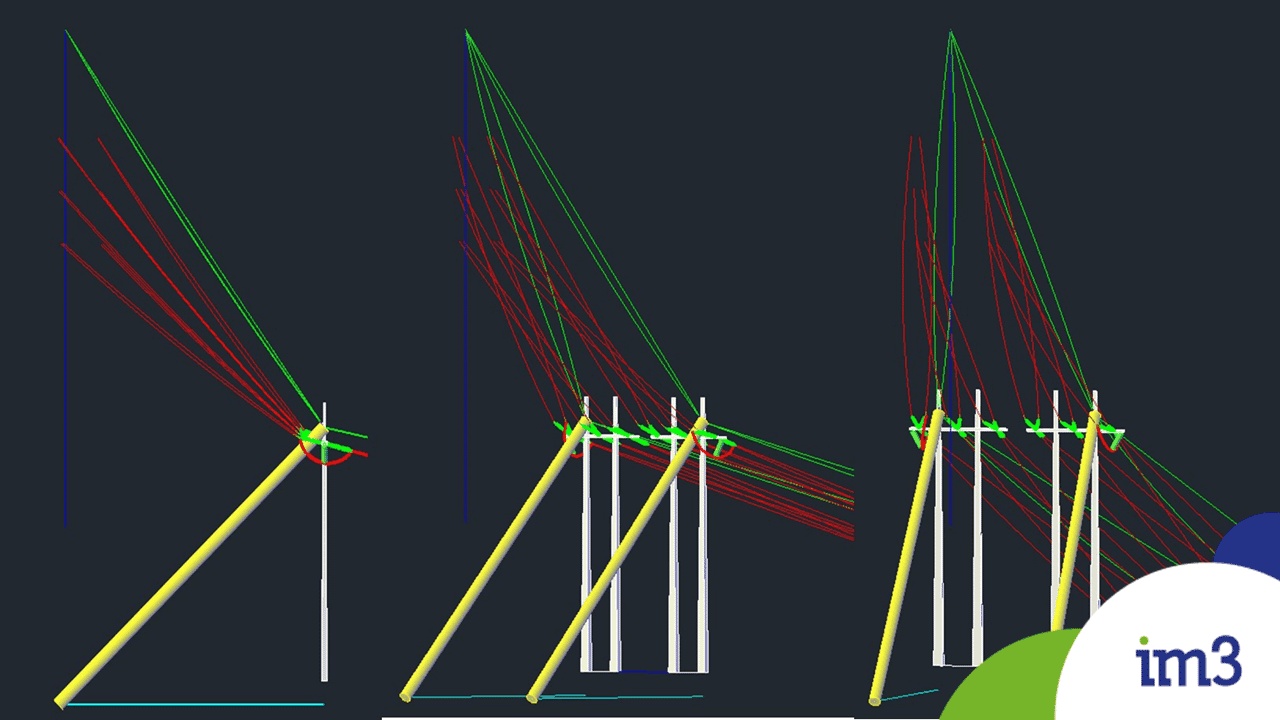
19 Aug 3D verifications (Conductor/Electric Bridge – Stay) of HV overhead lines with stayed structures
19/08/2022
New 2x110kV overhead power line project, laying 1st circuit, in the Metropolitan Region of Chile
All the projects that consider cable-stayed structures with a guard cable require special care in the design of the stay cables, since being located above the conductors (load point of the guard cable), the stay cables “cross” the energized power cables, so the layout must meet current electrical distance requirements (RPTD No. 07).
The laying of the new 2×110 kV line with OPGW in the Metropolitan Region of Chile will be in ‘double flag’, that is, a circuit on each side of the structure, with the phases arranged in three different horizontal planes, with six semi-crossheads, to its standard structures, and horizontal arrangement for the crossing portals (double), which will allow the future laying of the second circuit at a later stage. In this case, the new line is designed with crossing portals on reinforced concrete poles, so that the guard cable stays cross with the conductors.
The configuration shown in the image considers reduced mechanical stress (RMT) in the shortest span, these loads being absorbed by the nominal mechanical capacity of the posts (it is not possible to install tie rods as they would project facing the slope), on the other hand, the span at nominal mechanical stress requires the support of tie rods.
All of the above requires a high design precision, which ensures compliance with the electrical distances of the solution, as well as the absence of interference for the constructability of all the structural elements: frames, braces and their foundations. The 3D verification of critical sections at crossovers of the phase conductor / stay allows any possible conflict in the physical materialization of the installations to be foreseen, and the client is given a project with a total guarantee of constructive feasibility.
3D verifications also facilitate the development of safe procedures, improving the specific safety conditions of the works, and the planning and reduction of loss of input materials, tools and man-hours, resulting in a higher sustainability index.

